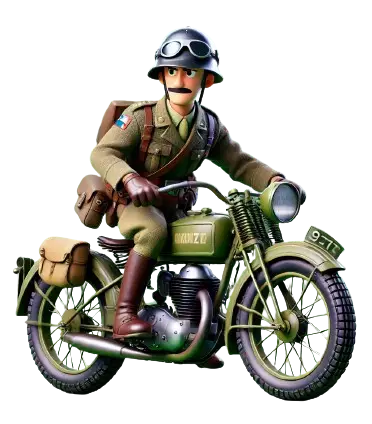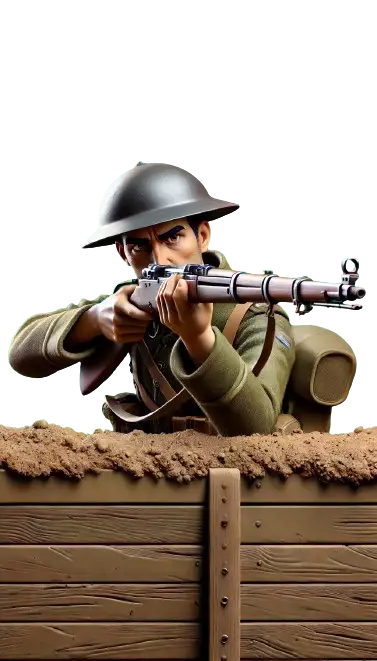The outbreak of World War 1 / Learn Spanish and English
Learn Spanish With History
Spanish Vocabulary
Press on each word below to discover its meaning
Estallido / Outbreak
Which Means – Outbreak:, The sudden occurrence of something unwelcome, such as war or disease.
The phrase In the story: “El estallido que sacudió al mundo.”
Chispa / Spark
Which Means – Spark: , A small fiery particle or a moment that triggers a significant event.
The phrase In the story: “Este hecho fue la chispa que encendió la mecha.”
Mecha / Fuse
Which Means– Fuse: , A cord or material used to ignite an explosive, often metaphorically used to describe the beginning of a conflict.
The phrase In the story: “La chispa que encendió la mecha de una guerra.”
Alianzas / Alliances
Which Means – Alliances: , Agreements between nations to support each other, especially in times of war.
The phrase In the story: “Las alianzas militares arrastraron a las principales potencias.”
Conflicto / Conflict
Which Means– Conflict: , A serious disagreement or argument, often protracted.
The phrase in the story: “Un conflicto brutal y prolongado.”
invadió / Invade
Which Means– Invade:, To enter a country or region with the intent of conquest.
The phrase in the story: “Alemania invadió Bélgica.”
Rostro / Face
Which Means – Face, The front part of the head that includes the eyes, nose, and mouth, often used metaphorically to represent the identity or appearance of something.
The phrase in the story: “Cambió el rostro de Europa.”

La Primera Guerra Mundial Una Chispa que Encendió Europa
Learn and improve your Spanish and English Through Stories
La Primera Guerra Mundial Spanish Version
El Estallido de la Primera Guerra Mundial: Una Chispa que Encendió Europa
En el verano de 1914, Europa era un campo de tensiones que bullían bajo la superficie. Las grandes potencias se veían atrapadas en una red de alianzas frágiles, rivalidades territoriales y ambiciones imperiales. Desde las capitales de Europa, pocos imaginaban que en cuestión de semanas, un conflicto sin precedentes desataría el caos y la destrucción en el continente. Todo comenzó con un disparo en Sarajevo.
El asesinato que lo cambió todo
El 28 de junio de 1914, el archiduque Francisco Fernando, heredero al trono del Imperio Austrohúngaro, visitaba la ciudad de Sarajevo, capital de Bosnia, una región anexionada por Austria-Hungría unos años antes. Durante su visita, un joven nacionalista serbio llamado Gavrilo Princip disparó contra el archiduque y su esposa Sofía, matándolos en el acto. Lo que podría haber sido un trágico incidente aislado se convirtió rápidamente en la chispa que encendió la mecha de una guerra global.
El asesinato exacerbó las tensiones entre Austria-Hungría y Serbia, un pequeño país balcánico con aspiraciones nacionalistas que contaba con el apoyo de Rusia. En un intento de vengar la muerte del archiduque y sofocar el movimiento nacionalista serbio, Austria-Hungría emitió un ultimátum a Serbia con demandas imposibles de cumplir. Aunque Serbia accedió a la mayoría de las condiciones, Austria-Hungría, respaldada por Alemania, declaró la guerra a Serbia el 28 de julio de 1914.
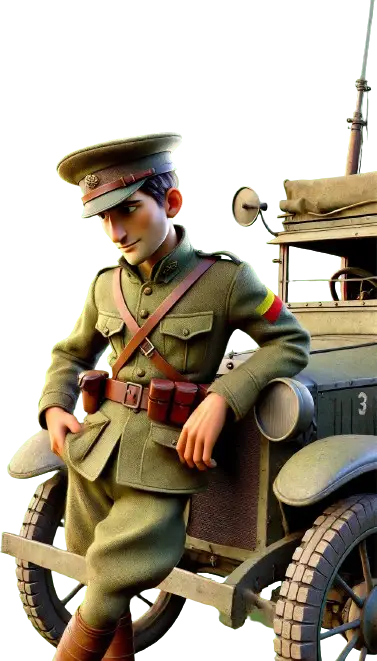
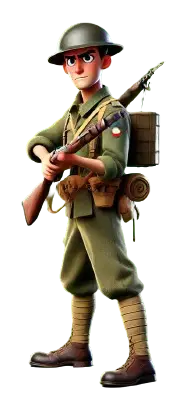
El espiral hacia la guerra total
El conflicto entre Austria-Hungría y Serbia, que en principio parecía limitado a los Balcanes, rápidamente escapó de control. Las alianzas militares establecidas en años anteriores empezaron a arrastrar a las principales potencias europeas hacia el conflicto. Rusia, con su papel de protector de los pueblos eslavos y aliado de Serbia, comenzó a movilizar su ejército en apoyo a su pequeño aliado balcánico. Este movimiento alarmó a Alemania, aliada de Austria-Hungría, que a su vez declaró la guerra a Rusia el 1 de agosto de 1914.
La complejidad de las alianzas no terminó ahí. Francia, que había firmado un tratado de apoyo mutuo con Rusia, se vio obligada a entrar en el conflicto. Al mismo tiempo, Alemania puso en marcha su plan Schlieffen, una estrategia militar que implicaba invadir Bélgica, un país neutral, para poder atacar a Francia desde el norte. Este movimiento violó la neutralidad belga y llevó a Gran Bretaña, que había garantizado la independencia de Bélgica, a declarar la guerra a Alemania el 4 de agosto de 1914.
En cuestión de semanas, Europa se encontraba envuelta en una guerra que pocos habían previsto. Alemania, Austria-Hungría, y el Imperio Otomano formaban las Potencias Centrales, mientras que Francia, Rusia, Gran Bretaña y Serbia componían las Potencias Aliadas. La maquinaria de guerra estaba en marcha y no se detendría fácilmente.
De la guerra rápida a la trinchera interminable
En 1914, muchos creían que la guerra sería rápida y decisiva. Los líderes militares de ambos bandos preveían victorias rápidas antes de la llegada del invierno. Sin embargo, lo que siguió fue un conflicto brutal y prolongado que cambiaría para siempre la forma de hacer la guerra. En lugar de rápidos avances y grandes batallas decisivas, la guerra en el frente occidental se estancó en una sangrienta lucha de trincheras.
A lo largo de una línea que se extendía desde el Mar del Norte hasta Suiza, millones de soldados cavaron en el barro, construyendo vastos sistemas de trincheras que se convirtieron en su hogar durante meses, y en muchos casos, años. En estas condiciones miserables, el hambre, las enfermedades y el frío se convirtieron en enemigos tan letales como las balas. Los soldados enfrentaban bombardeos constantes, ataques de gas venenoso y cargas suicidas hacia las líneas enemigas.
Las batallas en lugares como Verdún y el Somme dejaron cicatrices profundas en Europa. En Verdún, en 1916, Francia y Alemania se enfrentaron durante casi un año en una de las batallas más largas y sangrientas de la guerra, con más de 700,000 bajas entre ambos bandos. En el Somme, los Aliados lanzaron una ofensiva que resultó en la pérdida de más de un millón de hombres en pocos meses. Estas batallas no lograron romper el estancamiento, pero dejaron una huella imborrable en la memoria colectiva.
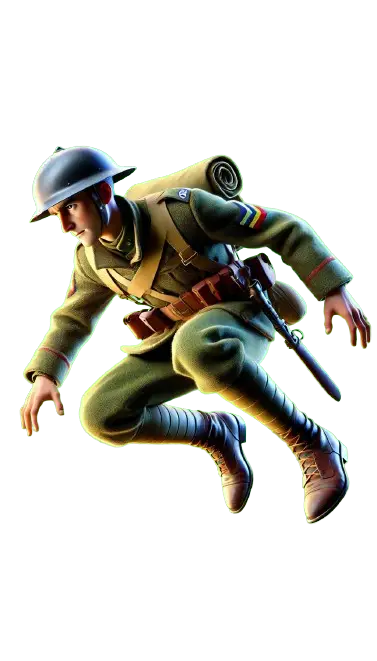
Un conflicto global y sus secuelas
La Primera Guerra Mundial no solo afectó a Europa. A medida que el conflicto se prolongaba, arrastró a más países y regiones al fuego cruzado. Las colonias europeas en África y Asia se convirtieron en escenarios de conflicto, y potencias como Japón aprovecharon la oportunidad para expandir su influencia en el Pacífico. En 1917, Estados Unidos, que hasta ese momento había mantenido una postura de neutralidad, entró en la guerra tras los ataques de submarinos alemanes a barcos estadounidenses.
El final de la guerra comenzó a gestarse en 1918. Agotadas por años de lucha, las Potencias Centrales empezaron a colapsar. En noviembre de ese año, Alemania firmó un armisticio que puso fin a los combates, y en 1919, el Tratado de Versalles formalizó la paz. Sin embargo, las condiciones del tratado, que impusieron fuertes sanciones a Alemania, sembraron las semillas de futuros conflictos.
Un nuevo mundo surgido de las cenizas
La Primera Guerra Mundial dejó una Europa destrozada y cambió el rostro del continente para siempre. Los imperios de Alemania, Austria-Hungría, Rusia y el Imperio Otomano colapsaron, y nuevos países surgieron de sus ruinas. La guerra no solo transformó las fronteras políticas, sino que también dio lugar a un cambio profundo en la forma en que se concebía el conflicto. El concepto de una “guerra total”, en la que se movilizaban todos los recursos de una nación, había llegado para quedarse.
El conflicto no solo marcó el fin de una era, sino que dejó heridas que nunca cicatrizaron por completo. El costo humano fue devastador: más de 16 millones de personas murieron, y muchos más quedaron heridos o desplazados. El impacto psicológico de la guerra, conocido como “neurosis de guerra” o lo que hoy llamamos trastorno de estrés postraumático, afectó a generaciones enteras.
Conclusión
Lo que comenzó como una chispa en Sarajevo rápidamente se convirtió en una conflagración que arrasó Europa y más allá. La Primera Guerra Mundial cambió el curso de la historia y dejó una huella profunda en la sociedad, la política y la cultura. La guerra que muchos pensaron sería breve se transformó en un conflicto brutal y prolongado que moldeó el mundo moderno. La “Gran Guerra” dejó lecciones que resonarían en los años venideros, marcando el inicio de un siglo de cambios sin precedentes.
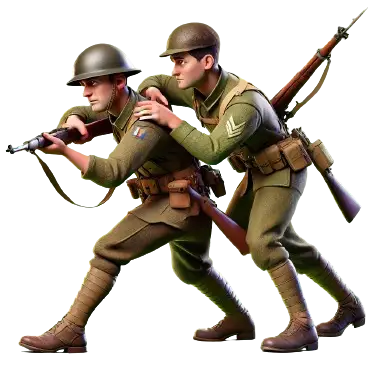

World War 1
A Spark that Ignited Europe
Aprende y mejora tu español e ingles a travez de historias
World War 1 English Version
The Outbreak of World War I: A Spark that Ignited Europe
In the summer of 1914, Europe was a tinderbox of tensions simmering beneath the surface. The great powers were trapped in a web of fragile alliances, territorial rivalries, and imperial ambitions. From the capitals of Europe, few could have imagined that within weeks, an unprecedented conflict would erupt, bringing chaos and destruction to the continent. It all began with a single shot in Sarajevo.
The Assassination That Changed Everything
On June 28, 1914, Archduke Franz Ferdinand, heir to the Austro-Hungarian throne, was visiting Sarajevo, the capital of Bosnia, a region annexed by Austria-Hungary a few years earlier. During his visit, a young Serbian nationalist named Gavrilo Princip shot and killed the archduke and his wife, Sophie. What might have been an isolated tragic event quickly escalated into the spark that ignited a global war.
The assassination heightened tensions between Austria-Hungary and Serbia, a small Balkan country with nationalist aspirations supported by Russia. In an attempt to avenge the archduke’s death and crush Serbian nationalism, Austria-Hungary issued an ultimatum with demands that Serbia could not fully meet. Despite Serbia’s compliance with most conditions, Austria-Hungary, backed by Germany, declared war on Serbia on July 28, 1914.
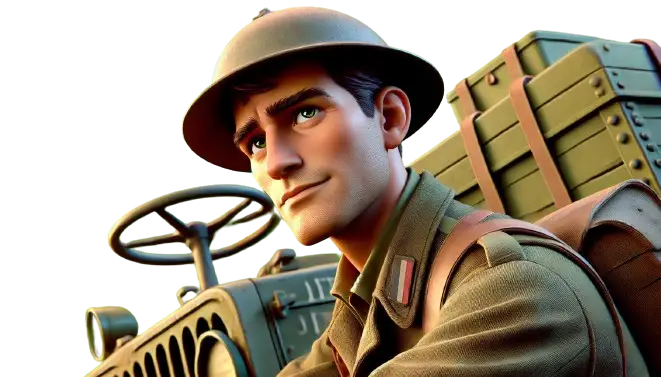
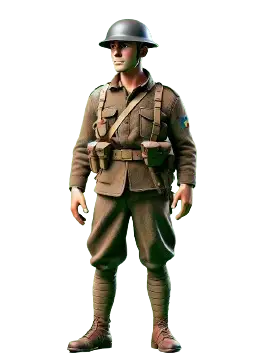
The Spiral into Total War
What began as a conflict between Austria-Hungary and Serbia quickly spiraled out of control. Military alliances formed in previous years began to draw the major European powers into the war. Russia, acting as protector of Slavic peoples and ally of Serbia, started mobilizing its army in support of its Balkan ally. This move alarmed Germany, Austria-Hungary’s ally, which declared war on Russia on August 1, 1914.
The web of alliances extended further. France, bound by a mutual support treaty with Russia, was drawn into the conflict. At the same time, Germany activated the Schlieffen Plan, a military strategy that involved invading neutral Belgium in order to attack France from the north. This violation of Belgian neutrality led Britain, which had guaranteed Belgium’s independence, to declare war on Germany on August 4, 1914.
Within weeks, Europe was engulfed in a war that few had anticipated. Germany, Austria-Hungary, and the Ottoman Empire formed the Central Powers, while France, Russia, Britain, and Serbia comprised the Allied Powers. The machinery of war had been set in motion, and it would not stop easily.
From a Quick War to Endless Trenches
In 1914, many believed the war would be swift and decisive. Military leaders on both sides predicted quick victories before the arrival of winter. However, what followed was a brutal and prolonged conflict that would forever change the nature of warfare. Instead of rapid advances and decisive battles, the war on the Western Front became a bloody stalemate in the trenches.
Along a line stretching from the North Sea to Switzerland, millions of soldiers dug into the mud, building vast trench systems that became their homes for months—and in many cases, years. In these miserable conditions, hunger, disease, and the cold became as deadly as the bullets. Soldiers endured constant artillery bombardments, poison gas attacks, and suicidal charges across no man’s land toward enemy lines.
Battles in places like Verdun and the Somme left deep scars across Europe. At Verdun, in 1916, France and Germany fought for nearly a year in one of the longest and bloodiest battles of the war, with more than 700,000 casualties on both sides. At the Somme, the Allies launched an offensive that resulted in over one million men being killed or wounded within a few months. These battles failed to break the stalemate but left an indelible mark on the collective memory of Europe.
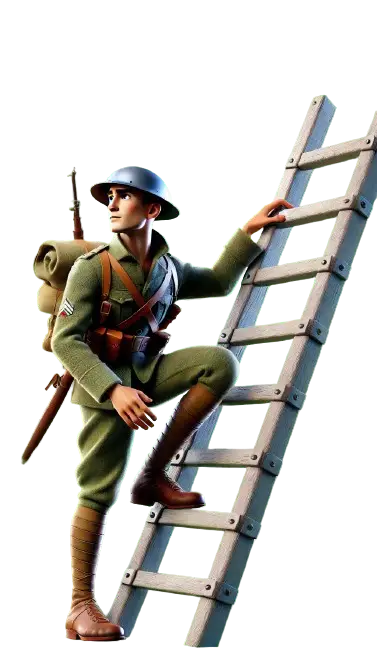
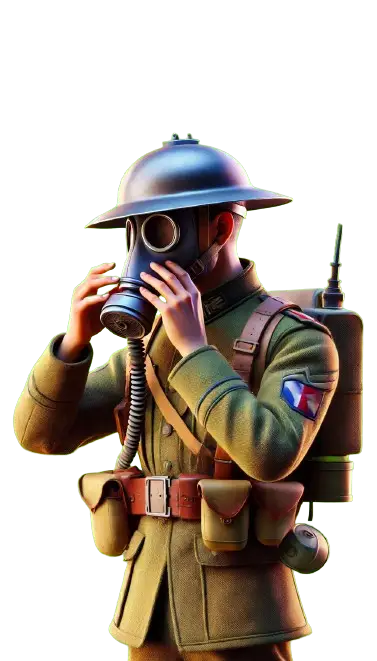
A Global Conflict and Its Aftermath
World War I was not confined to Europe. As the conflict dragged on, it drew more countries and regions into the fray. European colonies in Africa and Asia became theaters of war, and powers like Japan seized the opportunity to expand their influence in the Pacific. In 1917, the United States, which had remained neutral until then, entered the war following German submarine attacks on American ships.
The end of the war began to take shape in 1918. Exhausted by years of fighting, the Central Powers started to crumble. In November of that year, Germany signed an armistice that brought the fighting to an end, and in 1919, the Treaty of Versailles officially formalized peace. However, the terms of the treaty, which imposed harsh penalties on Germany, sowed the seeds for future conflicts.
A New World from the Ashes
World War I left a devastated Europe and forever changed the face of the continent. The empires of Germany, Austria-Hungary, Russia, and the Ottoman Empire collapsed, and new countries emerged from their ruins. The war not only transformed political borders but also led to a profound change in how warfare was conceived. The concept of “total war,” where all of a nation’s resources were mobilized, had arrived and would remain a reality in future conflicts.
The conflict marked the end of an era, but it also left wounds that never fully healed. The human cost was staggering: over 16 million people died, and many more were wounded or displaced. The psychological impact of the war, known as “shell shock” or what we now call post-traumatic stress disorder, affected entire generations.
Conclusion
What began as a spark in Sarajevo quickly became a conflagration that consumed Europe and beyond. World War I changed the course of history and left a deep imprint on society, politics, and culture. The war that many thought would be short transformed into a brutal, prolonged conflict that shaped the modern world. The “Great War” left lessons that would resonate for years to come, marking the beginning of a century of unprecedented change.
